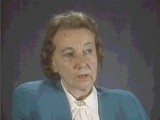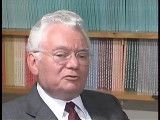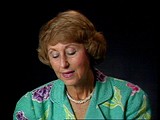You searched for: %EC%8B%A4%EC%8B%9C%EA%B0%84%EB%B0%94%EC%B9%B4%EB%9D%BC%EC%82%AC%EC%9D%B4%ED%8A%B8%20Zx444.TOP%20%EC%BD%94%EB%93%9C%206520%20%EB%B0%94%EC%B9%B4%EB%9D%BC%20%EC%9A%A9%EC%96%B4%20%EA%B5%AD%EB%82%B4%20%EC%99%B8%EA%B5%AD%EC%9D%B8%20%EC%B9%B4%EC%A7%80%EB%85%B8%20%EC%B9%B4%EC%A7%80%EB%85%B8%EC%9D%B8%EC%B2%9C%EC%A0%90%20iEo
<< Previous | Displaying results 421-430 of 562 for "%EC%8B%A4%EC%8B%9C%EA%B0%84%EB%B0%94%EC%B9%B4%EB%9D%BC%EC%82%AC%EC%9D%B4%ED%8A%B8%20Zx444.TOP%20%EC%BD%94%EB%93%9C%206520%20%EB%B0%94%EC%B9%B4%EB%9D%BC%20%EC%9A%A9%EC%96%B4%20%EA%B5%AD%EB%82%B4%20%EC%99%B8%EA%B5%AD%EC%9D%B8%20%EC%B9%B4%EC%A7%80%EB%85%B8%20%EC%B9%B4%EC%A7%80%EB%85%B8%EC%9D%B8%EC%B2%9C%EC%A0%90%20iEo" | Next >>
-
Lithuania
ArticleAs part of the Holocaust, the Germans murdered about 90% of Jews in Lithuania. Read more about the tragic experience of Lithuanian Jews during World War II.

-
Vladka (Fagele) Peltel Meed describes smuggling activities in the Warsaw ghetto
Oral HistoryVladka belonged to the Zukunft youth movement of the Bund (the Jewish Socialist party). She was active in the Warsaw ghetto underground as a member of the Jewish Fighting Organization (ZOB). In December 1942, she was smuggled out to the Aryan, Polish side of Warsaw to try to obtain arms and to find hiding places for children and adults. She became an active courier for the Jewish underground and for Jews in camps, forests, and other ghettos.

-
Leo Schneiderman describes conditions on a freight car during deportation from Lodz to Auschwitz
Oral HistoryThe Germans invaded Poland in September 1939. Leo and his family were confined to a ghetto in Lodz. Leo was forced to work as a tailor in a uniform factory. The Lodz ghetto was liquidated in 1944, and Leo was deported to Auschwitz. He was then sent to the Gross-Rosen camp system for forced labor. As the Soviet army advanced, the prisoners were transferred to the Ebensee camp in Austria. The Ebensee camp was liberated in 1945.

-
Thomas Buergenthal describes differing perspectives on international justice
Oral HistoryJudge Thomas Buergenthal was one of the youngest survivors of the Auschwitz and Sachsenhausen concentration camps. He immigrated to the United States at the age of 17. Judge Buergenthal devoted his life to international and human rights law. He served as chairman of the United States Holocaust Memorial Museum’s Committee on Conscience; was named the Lobingier Professor of Comparative Law and Jurisprudence at the George Washington University Law School; and served for a decade as the American judge at…

-
Concentration Camps, 1933–39
ArticleLearn about early concentration camps the Nazi regime established in Germany, and the expansion of the camp system during the Holocaust and World War II.

-
Vidkun Quisling
ArticleVidkun Quisling, Minister President of Norway from 1942 to 1945, was a Norwegian fascist and Nazi collaborator. His last name has come to mean “traitor” or “collaborator.”

-
Darfur
ArticleFrom 2003 to 2005, an estimated 200,000 civilians died as a result of a campaign of violence in Darfur by the Sudanese government. In 2004, the US Secretary of State called this violence a genocide.

-
Doriane Kurz recalls Bergen-Belsen prisoners hauling wagons of corpses
Oral HistoryDoriane's Jewish family fled to Amsterdam in 1940, a year that also saw the German occupation of the Netherlands. Her father perished after deportation to Auschwitz. After their mother was seized, Doriane and her brother hid with gentiles. The three were reunited at Bergen-Belsen, where they were deported via Westerbork. They were liberated during the camp's 1945 evacuation. Doriane's mother died of cancer soon after Doriane helped her recover from typhus.

-
Beifeld album page about partisans and lodgings
Artifact(top) "Watercolor entitled 'Partisan hotel and public house', Krassnolipia, Ukraine, until July 31, 1942"; (middle) "Drawing entitled 'The interrogation of partisans captured by our unit'"; (bottom) "Watercolor entitled 'My lodgings in Krassnolipia'" [Photograph #58040]

-
Beifeld album page illustrating military events
Artifact(Top) A map dated August 1942 showing the area of the late summer skirmishes between Hungarian and Soviet forces. It also shows the crucial bend in the Don River near the town of Uryv, where the fateful Soviet breakthrough occurred in January 1943. (Bottom) "Fairy tale nights along the Don River, August 1942." [Photograph #58058]

